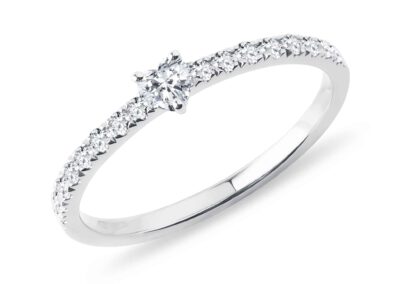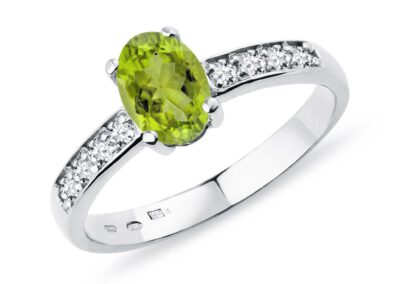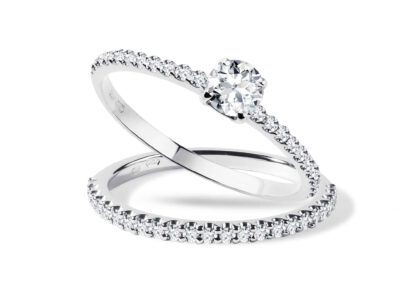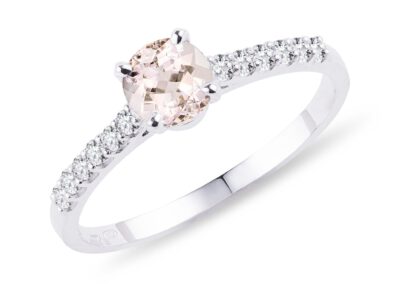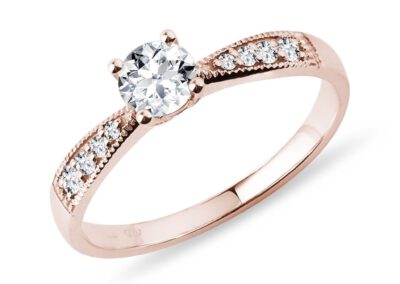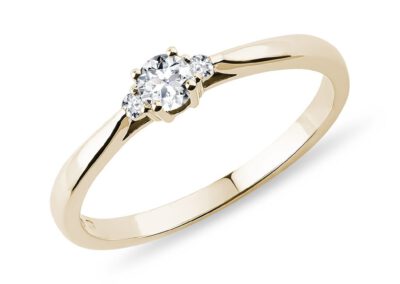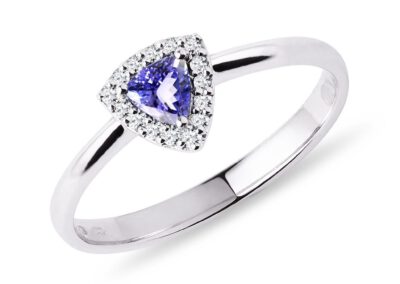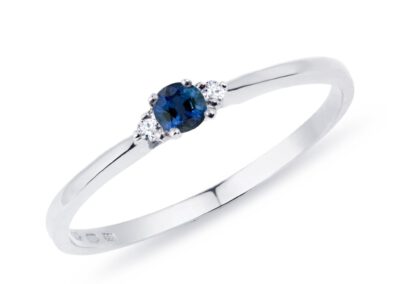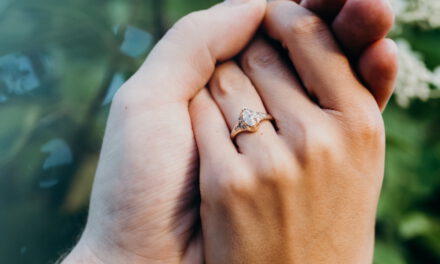The history of engagement rings can be surprising and fascinating. It may be actually shocking that today’s symbol of neverending love and commitment was not connected to love at all! So when did engagement rings become a symbol of marriage and love? What did they symbolise before, and how did they look? Here is an overview of the history of engagement rings.
Ancient Times: Early Engagement Rings
The history of engagement rings begins thousands of years ago in ancient times when the traditions of wearing a round symbol on your finger started.
Ancient Egypt
Some sources suggest that the history of wearing engagement rings began in Ancient Egypt, where they saw the ring as a powerful symbol of eternity, unity and upcoming family life. For them, the band with no end represented eternal love. The Egyptians crafted their first engagement rings from reed, leather, papyrus or hemp. Especially signet rings were trendy around the Ancient Egypt period.
Ancient Rome
The ancient Romans continued the Egyptian ring gifting custom. While Egyptians saw rings as proof of devotion, Romans linked rings to marriage. Roman women wore rings made of ivory, flint and bone, and later copper, iron and gold. Gold rings were later found in Pompeii, proving the rising popularity of this precious metal.
Roman women received not one but two separate engagement rings – a gold ring worn in public to impress others and an iron ring worn in private while attending to household duties. The woman wore her ring secured to her keys to show her love and commitment to her husband.
The idea of using the ring finger for engagement and wedding rings originated in Ancient Rome. The ancient Romans believed that our bodies had a ‘Vena Amoris’, or ‘Vein of Love’, which connected the fourth finger of the left hand directly to the heart. This tradition still lives on, although we now know there is no such thing as a ‘Vein of Love’.
Ancient Greece
Both in Ancient Egypt and Greece, rings and other jewellery were given with love – expressing affection and commitment. In Ancient Greece, marriage was seen only as an agreement between the two households with no love involved. So lovers gifted each other rings to show their true love, devotion and care.
Medieval Times
In medieval times, people followed the ring-exchanging tradition when proposing to someone as a symbol of love and upcoming marriage. In addition, the ring was a symbol of faith or a genuine gift. The favoured stacking trend started around this era – women would wear more than one ring and stack them together on one finger. Also, gemstones began to be set in engagement rings from the Middle Ages. Gemstones used during the Middle Ages, particularly in Western Europe, included rubies, symbolising passion, sapphires and diamonds!
The first diamond set in an engagement ring dates back to 1477 when the Austrian monarch Maximilian I presented Mary of Burgundy with an elegant M-shaped diamond engagement ring. This event marked the first historical record of the traditional diamond ring as we know it today. But, the idea of a diamond engagement ring didn’t stick out for long, and diamond engagement rings remained rare until the late 19th century when they became renowned.
Another fashionable choice was the fede ring, in which two hands are clasped together, representing love and friendship. These were used already in Ancient Rome but became well-known later in medieval times. Many also carved beautiful symbols of peace and love into engagement rings, such as doves or flowers.
Renaissance Era and the Evolution of Diamond Engagement Ring
Diamond engagement rings were the most fashionable at the beginning of the Renaissance era. However, as said before, they lost their charm and came back as part of the 19th-century Renaissance revival. Diamonds were rare during the Renaissance, so only the wealthy and royalty could afford a diamond engagement ring. But, diamonds became more accessible in the Victorian Era when miners discovered diamonds in South Africa. Suddenly, everyone was wearing a diamond ring, and the diamond trend slowly disappeared.
A few decades after their demise, De Beers, one of the world’s most recognisable diamond companies, developed a marketing plan to bring diamond engagement rings back to life. De Beers used a well-known “A Diamond is Forever” phrase in its marketing campaign and brought diamond engagement rings back into the spotlight.
A common type of Renaissance engagement ring was the gimmel ring. This ring consisted of two or three separate pieces. One was worn by the bride, one by the groom and the last by a witness. The rings formed a complex ring when assembled and were only worn by the bride after the wedding.
Modern Engagement Rings
In recent years, brides have started to change their engagement ring preferences. Of course, diamond engagement rings are still the most favoured and timeless gemstone option. However, more and more brides are embracing coloured gemstones and rings made from unique precious materials.
Modern-day brides are charmed by coloured gemstones not only for their unusual colours and stylish look but also for the meaning and history of each gemstone. Even those who prefer traditional diamond engagement rings can enjoy coloured gemstones – coloured diamonds are on the rise in classic round or brilliant shapes or other stylish cuts.
Textured and detailed bands are popular, but the simple, sleek band remains timeless. Rose gold is a trendy metal that looks elegant and romantic combined with any gemstone and band design. Yellow gold and silver evoke traditional ring designs and will never go out of style – they are the safe option.
Summary
From papyrus-made engagement rings as a symbol of eternity to rose gold rings with colourful gemstones, engagement rings have been a part of our lives for thousands of years. Their tradition is rich and still going strong. Modern shopping methods bring a wide selection of engagement rings to choose from, so it’s common to find unique rings with fascinating gemstones and designs. There are no rules when it comes to buying an engagement ring, so go ahead and find the ideal one to seal your love and commitment!
An Engagement Ring for Every Style and Budget
Buying an engagement ring that your partner will love and say yes to can be difficult. The most important considerations when purchasing a ring are your partner’s style and your budget. Don’t feel bad or pressured if your financial situation doesn’t allow you to buy a large, magnificent diamond ring – there are thousands of rings out there, and surprisingly, the perfect one may be cheaper than you think! So, let’s look at the best engagement rings for every style and budget.
If you love classics, look for the simple yet elegant solitaire ring. These are often the most affordable and can be customised to match your partner’s style. Another option that achieves both modern and vintage looks is to use smaller diamonds alongside the central gem. These smaller stones offer endless combinations, are inexpensive and can be matched to your fiancé’s birth month. Another option – the tension engagement ring brings out a modern look. The main stone is set between the edges of the band, allowing more light to enter the stone and creating a luxurious look.

